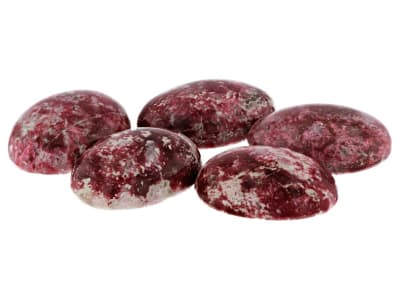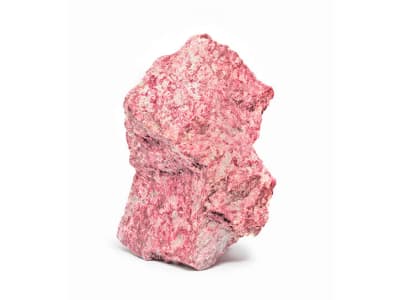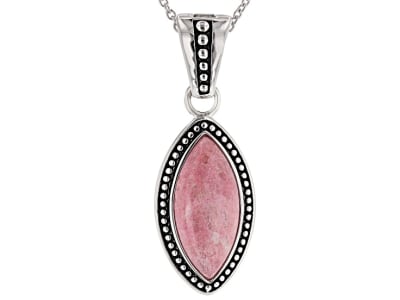Thulite is the translucent to opaque pink variety of zoisite, which is often mottled or streaked with gray or white quartz. The name thulite is derived from its discovery location, Norway, which was once called Thule. This gem is also called rosaline. Thulite is often cut en cabochon for jewelry manufacture or carved into ornaments.
General Information
Common Name
Thulite
Species
Zoisite
Transparency
Translucent - Opaque
Dispersion
Strength: Weak Fire Value: 0.021
Refractive Index
1.691-1.700
Tolerance:(+0.005/-0.005)
Tolerance:(+0.005/-0.005)
Birefringence
0.008-0.013
Optic Character
Biaxial
Optic Sign
Positive
Polariscope Reaction
Aggregate (AGG), Doubly Refractive (DR)
Fluorescence
SWUV: Inert
LWUV: Inert
LWUV: Inert
Pleochroism
Unobservable
Hardness
6-7
Streak
White
Specific Gravity
3.100-3.450 Typical:3.350
Toughness
Varies
Inclusions
Thulite has white veining is due to calcite and the pink color is due to manganese.
Luster
Vitreous, Pearly
Stability
Good
Fracture
Conchoidal, Uneven
Cleavage
Perfect, in one direction, Good, in one direction
Chemical Name
calcium aluminum silicate hydroxide
Chemical Formula
Ca2Al3(SiO4)3(OH)
Crystal System
Orthorhombic
Chemistry Classification
Silicate
Thulite Colors
-
 Multi-color
Multi-color -
 Pink
Pink -
 Red
Red
Alternate Names
Rosaline, Unionite
Countries of Origin
Unknown; Norway; United States of America
Care
Normal care


